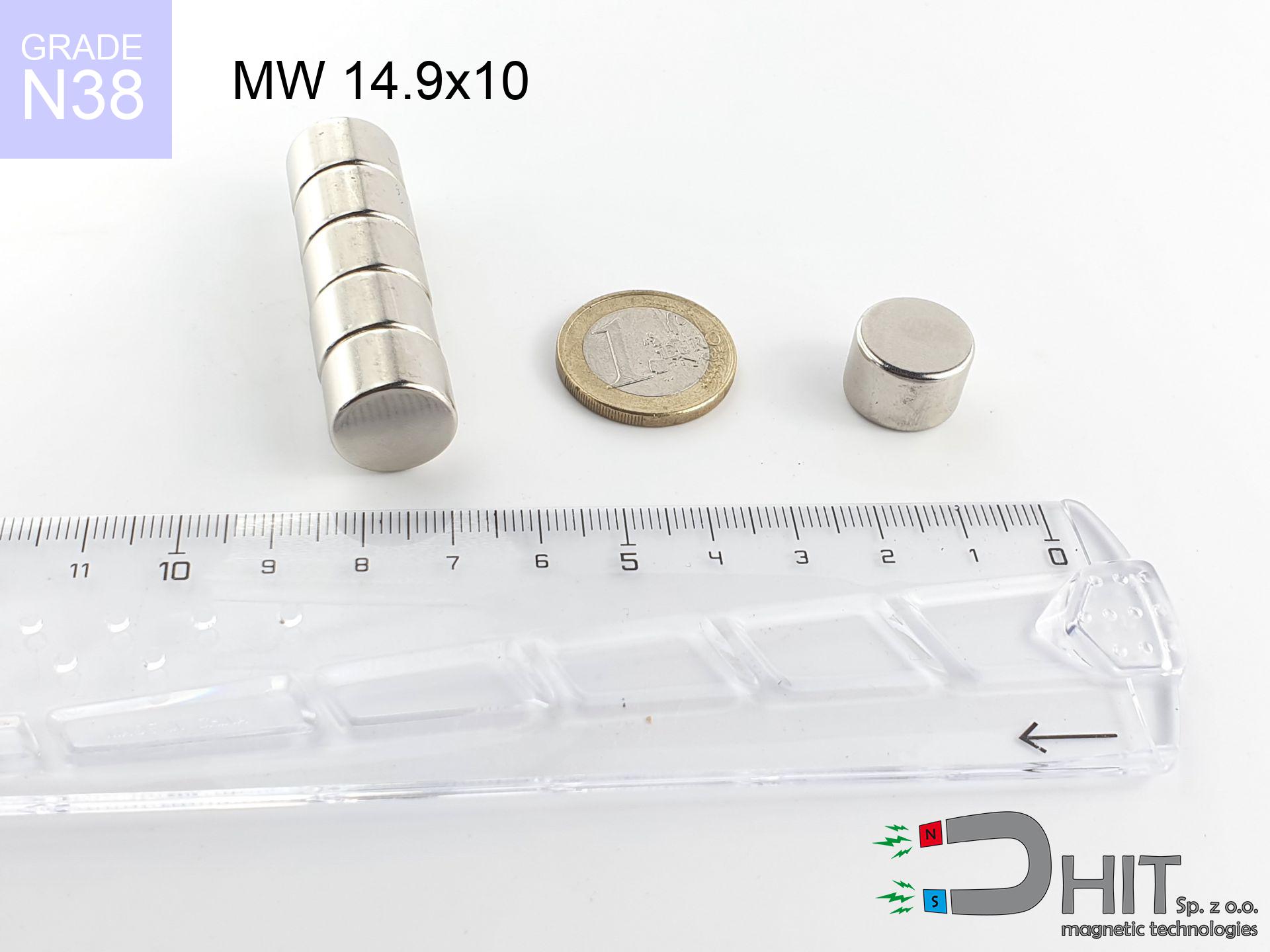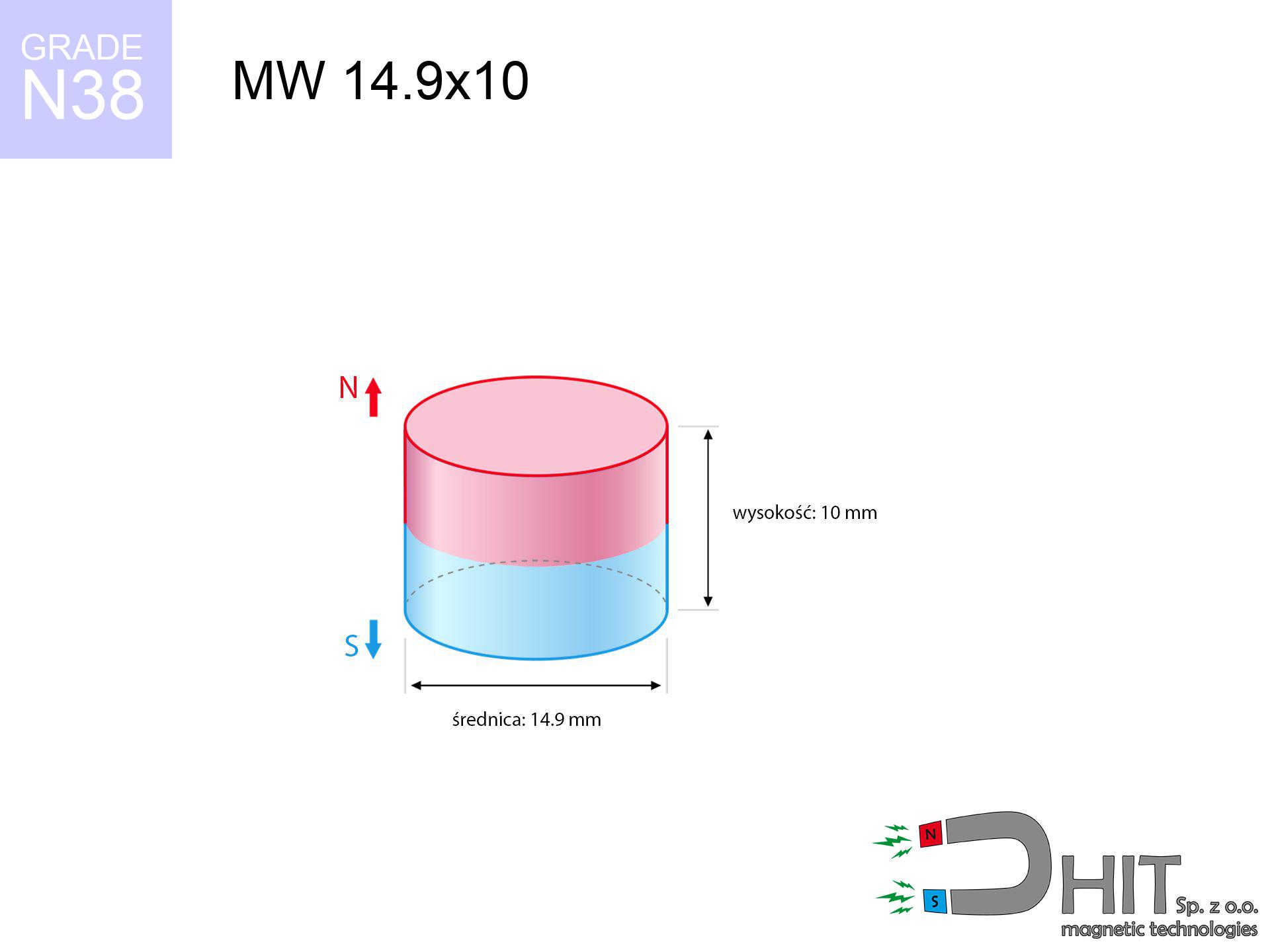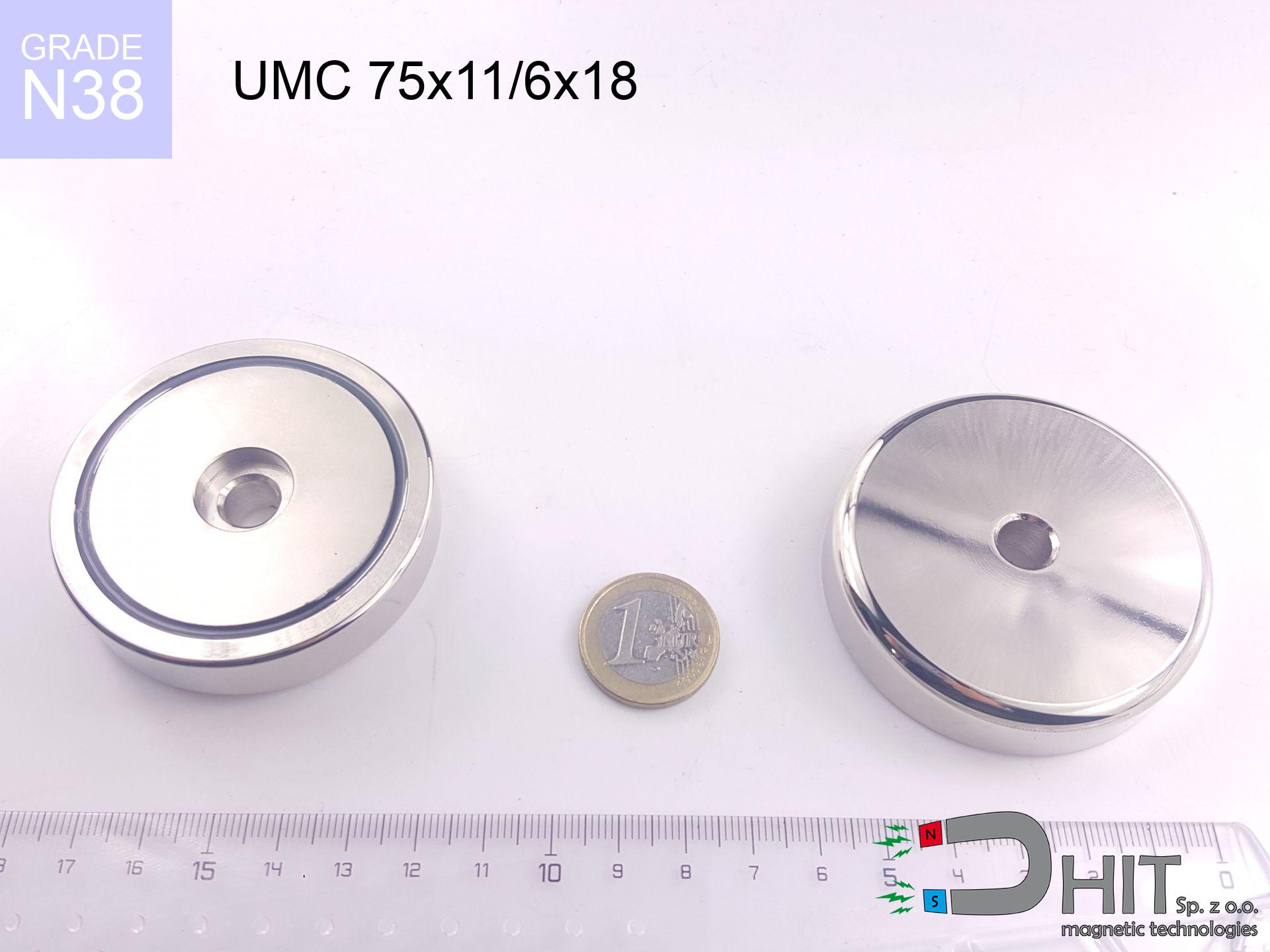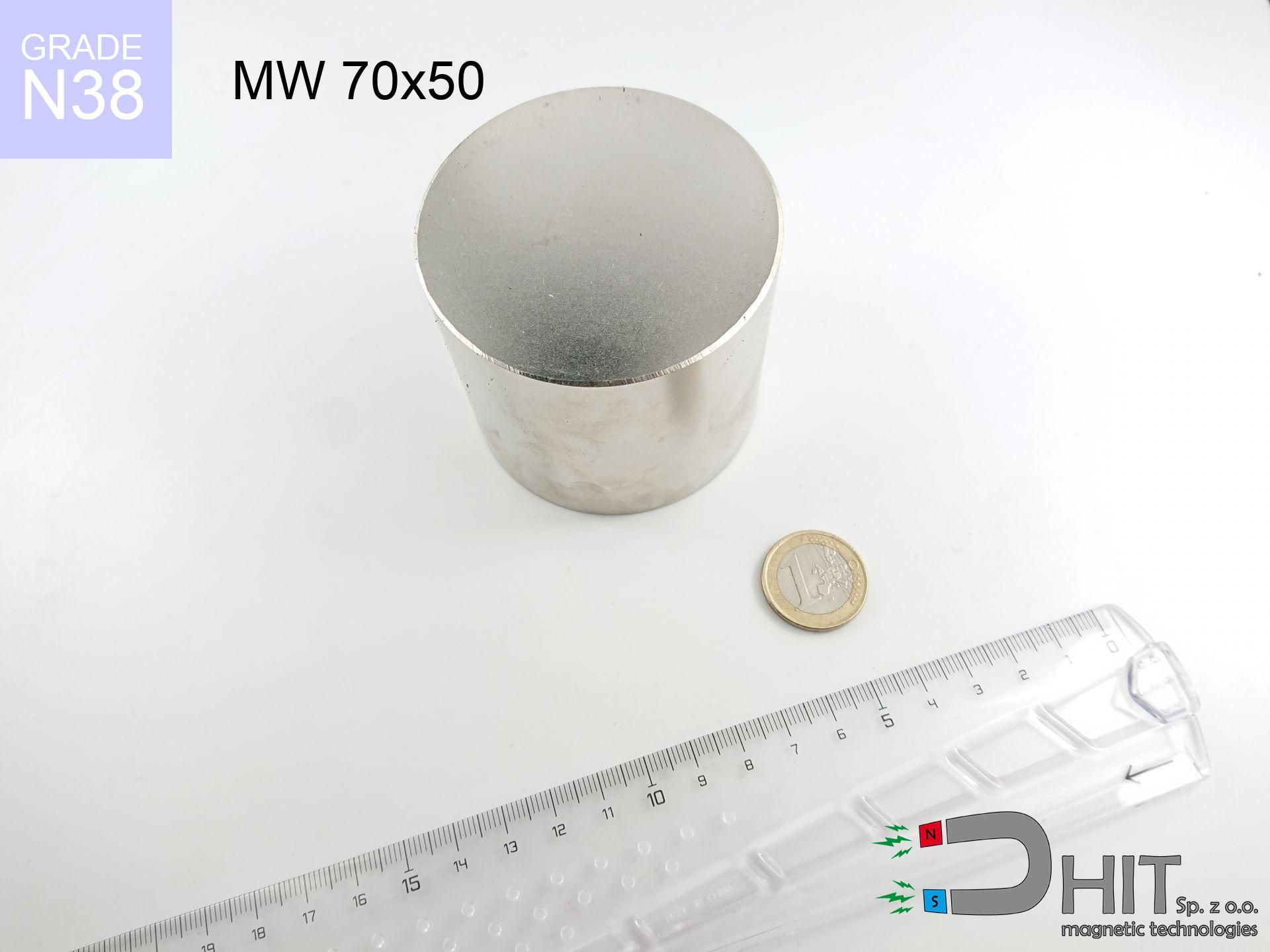MW 14.9x10 / N38 - cylindrical magnet
cylindrical magnet
Catalog no 010023
GTIN: 5906301810223
Diameter Ø [±0,1 mm]
14.9 mm
Height [±0,1 mm]
10 mm
Weight
13.08 g
Magnetization Direction
→ diametrical
Load capacity
8.24 kg / 80.81 N
Magnetic Induction
496.78 mT
Coating
[NiCuNi] nickel
8.24 ZŁ with VAT / pcs + price for transport
6.70 ZŁ net + 23% VAT / pcs
bulk discounts:
Need more?Hunting for a discount?
Call us
+48 22 499 98 98
alternatively let us know by means of
our online form
our website.
Strength as well as form of magnetic components can be checked using our
online calculation tool.
Orders submitted before 14:00 will be dispatched today!
Magnetic properties of material N38
Physical properties of sintered neodymium magnets Nd2Fe14B at 20°C
Shopping tips
Pros as well as cons of rare earth magnets.
Besides their high retention, neodymium magnets are valued for these benefits:
- They retain magnetic properties for almost ten years – the drop is just ~1% (in theory),
- Neodymium magnets prove to be exceptionally resistant to magnetic field loss caused by external field sources,
- Thanks to the reflective finish, the layer of nickel, gold, or silver-plated gives an visually attractive appearance,
- Magnets are distinguished by very high magnetic induction on the active area,
- Thanks to resistance to high temperature, they are able to function (depending on the shape) even at temperatures up to 230°C and higher...
- Possibility of precise creating as well as optimizing to atypical needs,
- Wide application in future technologies – they are used in computer drives, motor assemblies, medical devices, and multitasking production systems.
- Thanks to concentrated force, small magnets offer high operating force, in miniature format,
What to avoid - cons of neodymium magnets and ways of using them
- Brittleness is one of their disadvantages. Upon strong impact they can fracture. We recommend keeping them in a steel housing, which not only protects them against impacts but also increases their durability
- We warn that neodymium magnets can lose their power at high temperatures. To prevent this, we suggest our specialized [AH] magnets, which work effectively even at 230°C.
- When exposed to humidity, magnets start to rust. To use them in conditions outside, it is recommended to use protective magnets, such as magnets in rubber or plastics, which secure oxidation and corrosion.
- Due to limitations in creating threads and complicated forms in magnets, we propose using a housing - magnetic holder.
- Potential hazard resulting from small fragments of magnets can be dangerous, in case of ingestion, which becomes key in the aspect of protecting the youngest. It is also worth noting that small components of these magnets can be problematic in diagnostics medical in case of swallowing.
- With large orders the cost of neodymium magnets is a challenge,
Optimal lifting capacity of a neodymium magnet – what it depends on?
The load parameter shown refers to the maximum value, measured under laboratory conditions, namely:
- on a base made of mild steel, optimally conducting the magnetic field
- with a cross-section of at least 10 mm
- with a surface cleaned and smooth
- without any insulating layer between the magnet and steel
- under perpendicular application of breakaway force (90-degree angle)
- in neutral thermal conditions
Practical aspects of lifting capacity – factors
It is worth knowing that the working load may be lower influenced by the following factors, starting with the most relevant:
- Clearance – the presence of foreign body (rust, tape, air) acts as an insulator, which reduces power steeply (even by 50% at 0.5 mm).
- Pull-off angle – note that the magnet has greatest strength perpendicularly. Under sliding down, the capacity drops drastically, often to levels of 20-30% of the nominal value.
- Metal thickness – thin material does not allow full use of the magnet. Magnetic flux passes through the material instead of generating force.
- Material composition – different alloys reacts the same. High carbon content weaken the interaction with the magnet.
- Surface quality – the more even the surface, the larger the contact zone and higher the lifting capacity. Unevenness acts like micro-gaps.
- Operating temperature – NdFeB sinters have a sensitivity to temperature. At higher temperatures they lose power, and in frost gain strength (up to a certain limit).
* Lifting capacity testing was conducted on plates with a smooth surface of suitable thickness, under a perpendicular pulling force, in contrast under parallel forces the lifting capacity is smaller. In addition, even a small distance {between} the magnet and the plate reduces the lifting capacity.
H&S for magnets
Magnetic interference
Note: rare earth magnets generate a field that interferes with sensitive sensors. Maintain a safe distance from your phone, tablet, and navigation systems.
Magnets are brittle
Watch out for shards. Magnets can explode upon uncontrolled impact, ejecting sharp fragments into the air. We recommend safety glasses.
Product not for children
Absolutely keep magnets away from children. Ingestion danger is high, and the consequences of magnets connecting inside the body are life-threatening.
Keep away from computers
Device Safety: Neodymium magnets can ruin payment cards and delicate electronics (heart implants, medical aids, timepieces).
Handling rules
Handle magnets consciously. Their huge power can shock even experienced users. Plan your moves and respect their power.
Fire risk
Combustion risk: Rare earth powder is highly flammable. Avoid machining magnets without safety gear as this may cause fire.
Pinching danger
Big blocks can smash fingers instantly. Do not put your hand betwixt two strong magnets.
Thermal limits
Standard neodymium magnets (N-type) undergo demagnetization when the temperature goes above 80°C. Damage is permanent.
Warning for heart patients
Individuals with a ICD have to keep an large gap from magnets. The magnetic field can stop the operation of the implant.
Warning for allergy sufferers
A percentage of the population experience a sensitization to nickel, which is the typical protective layer for neodymium magnets. Prolonged contact may cause an allergic reaction. We suggest use protective gloves.
Danger!
Want to know more? Check our post: Are neodymium magnets dangerous?




![SM 25x250 [2xM8] / N42 - magnetic separator SM 25x250 [2xM8] / N42 - magnetic separator](https://cdn3.dhit.pl/graphics/products/sm-25x250-2xm8-ker.jpg)




